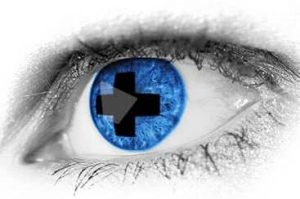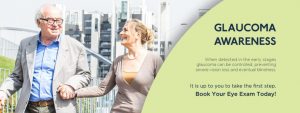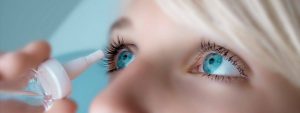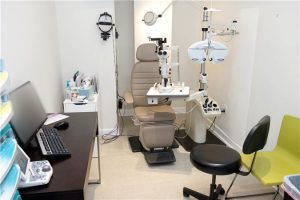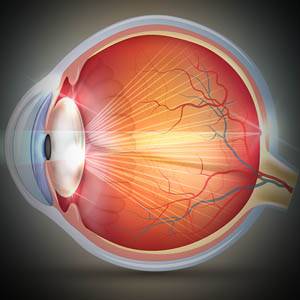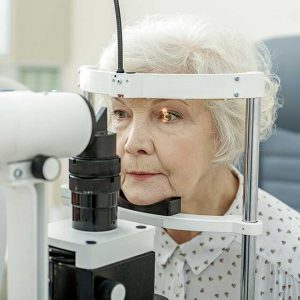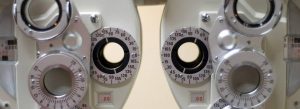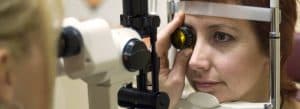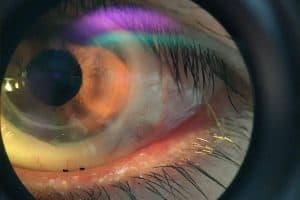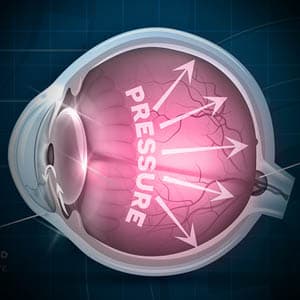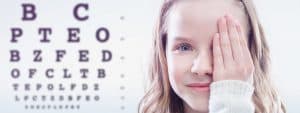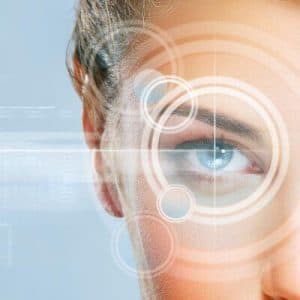Eyes and Herpes: Q&A
Herpes eye infection requires urgent medical attention. Eye herpes, also known as herpes keratitis, is a viral infection of the eye caused by the herpes
Read MoreHow Does Herpes Affect the Eyes?
Eye herpes affects over 1.5 million people around the world each year. The most common type of eye herpes is called epithelial keratitis, which tends
Read MoreEyes and Allergies
Up to 25 percent of people worldwide suffer from eye allergies. If you suffer from red, sore allergic eyes, there are several ways to prevent this condition from affecting your life. Allergies are a common complaint, and can cause a great deal of discomfort— sneezing, sniffling, stuffy nose, and itchy throat can all affect your daily functioning.
Read MoreTop 5 Pediatric Eye Emergencies
In the United States, approximately 380,000 patients per year are seen by emergency eye doctors. Over 33% are children requiring emergency eye care. While pediatric
Read MoreWhen is Blurred Vision a Medical Emergency?
A problem with any part of the eye, such as the retina, optic nerve or cornea, can suddenly cause blurred vision. Slowly progressive blurred vision is usually caused by long-term medical conditions. Sudden blurring is most often caused by a single event. Some instances of sudden blurred vision are medical emergencies that must be treated as soon as possible to prevent permanent damage and vision loss.
Read MoreWhen is Blurred Vision a Medical Emergency?
Almost everyone experiences blurry vision. If a headache occurs with or causes blurred vision, it may be due to an underlying condition or medical emergency.
Read MoreTop Home Tips for Low Vision
One in six adults over age of 45 and one in four adults over age 75 has low vision. Having low vision – reduced vision that can’t be improved with glasses, contact lenses, medication or surgery – can make it difficult to perform day-to-day tasks. Fortunately, there are many things a person with low vision can do to remain independent and do the things they enjoy and love.
Read More2021 Update: Parent’s Checklist for Vision Therapy
Does your child struggle in school and you’re not sure why? Up to 25 in every 100 children are affected by vision problems — that’s
Read More2021 Update: Lazy Eye and Adults
Lazy eye is estimated to affect up to 5% of all adults. For many decades, it has been thought that only children under the age
Read MoreNearsighted or Farsighted?
Have you been told you are ‘nearsighted’ or ‘farsighted’ but not totally sure what they mean? Both of these may require you to rely on
Read MoreGlaucoma: ‘The Silent Thief of Sight’
Did you know that rock star Bono from U2 has glaucoma? U2’s Bono is not alone, at least 3 million North Americans have glaucoma, but only 50% know they have it! In 95% of glaucoma cases, it starts off asymptomatic and by the time the condition is noticed, the vision loss is irreversible. That’s why regular eye exams are so crucial, even if you don’t suspect a problem.
Read MoreMyopia and Vision Therapy
Vision therapy not only treats lazy eye, eye turn, or learning difficulties, but may also prevent or slow the progression of myopia. While a cure
Read MoreTop 10 Tips For Contact Lens Wearers
If you wear contact lenses, you’ll want to read our list of the top 10 healthy habits that all contact lens wearers should follow. Do
Read MoreWhen are Atropine Eye Drops Used?
Atropine is an essential eye drop used by eye doctors in both the diagnosis and treatment of many eye conditions. When you go for your
Read MoreCan Sugar Affect Eye Health?
We all enjoy a sweet treat now and then, but too much sugar in our diet can come at a price. Here’s how eating excessive
Read MoreCan Sleep Apnea Affect Your Eyes?
Sleep apnea can affect not only your physical health, but can have serious consequences for your eyes and vision too. If you have sleep apnea,
Read MoreWhy Are Eye Exams Important?
Are Eye Exams Important? Yes! Many eye conditions, in their early stages, have no obvious signs or symptoms, so the annual exam is often the only way to detect eye conditions early. Since there are often no signs or symptoms, regular comprehensive eye exams are key to maintaining good vision and healthy eyes.
Read MoreTop 8 Contact Lens Problems
An estimated 45 million people in the U.S. wear contact lenses. If you are one of the millions that wears contact lenses, then you know
Read MoreShould I Buy Glasses Online?
While buying glasses and contact lenses online may seem enticing, there are many factors to think about before clicking that ‘buy’ button. Shopping online can seem to save time and money and can be extremely convenient, done from virtually anywhere at any time.
Read MoreTreatments for Eye Floaters
If eye floaters are affecting your vision, effective treatments are now available to give you relief. Eye floaters cause visual disturbances and can become so
Read MoreGuide to Low Vision Devices
With the large variety of low vision devices now available on the market, our guide will help you choose a magnifier that best suits your
Read MoreTypes of Eye Allergies
Up to 25 percent of people worldwide suffer from eye allergies. If you suffer from eye allergies, you may be wondering what is causing your
Read MoreCataract Surgery Complications
Every year, over 9.5 million cataract surgeries are performed, worldwide. While the overwhelming majority (98%) of cataract surgeries are successful, like any surgical procedure there
Read MoreCan Pregnancy Affect Vision?
Most moms-to-be are well aware of the bodily changes that remind you on a daily basis that you are expecting— the most common being: morning sickness, food aversions, heightened sense of smell, swollen ankles, headaches, exhaustion, and many other uncomfortable yet normal pregnancy symptoms. What you may not know is that these physiological changes that take place during pregnancy can also lead to changes in your eyes and vision.
Read MoreHow Does the Eye Work?
If 80% of everything we learn comes through our eyes – the question is, how? The eye contains over two million working parts and is considered the second most complex organ in the body, the most complex is the brain. The inner structures of the eye all work together to produce an image that your brain interprets.
Read MoreWhy Does Diabetes Cause Blurry Vision?
If you have diabetes, high blood sugar levels may be the cause of your blurry vision. Blurred vision, or any changes to your vision can be quite concerning. But before you panic, understand that blurry vision is commonly associated with diabetes and can sometimes just be a temporary problem.
Read MoreWhat Is Intermittent Strabismus?
Strabismus, also called an eye turn, can be intermittent or constant— depending on how often it occurs. Intermittent strabismus occurs occasionally, most often during stressful
Read MoreDry Eye Quiz
Are your dry eyes impacting your life? Dry eyes are common, affecting over 58 percent of the population. Dry eye syndrome, also referred to as
Read MoreSystemic Diseases That Cause Dry Eye
Up to 70 percent of patients with systemic conditions suffer from dry eye. Dry eyes is a common condition caused by insufficient tear quantity, or
Read MoreHow Does the Demodex Mite Cause Blepharitis?
What are demodex mites? The demodex mite can cause blepharitis, resulting in inflammation of the eyelids and severe dry eye. Demodex folliculorum is a type
Read MoreHow Is My Optical Prescription Measured?
Whether you are visiting your eye doctor for your annual checkup, or have noticed that your vision is not as sharp as it used to
Read MoreWhat Is a Visual Acuity Test?
Your visual acuity, or clarity of vision, represents how well you are able to see objects or images at a given distance. Visual acuity is
Read MoreWhat Are Prism Lenses?
Prism lenses can be effectively used to treat vision conditions, such as double vision and other binocular vision difficulties. One of the most common uses for an eye doctor to prescribe prisms is to treat a condition known as Binocular Visual Dysfunction (BVD).
Read MoreVision Therapy for Blurred Vision: Success Stories
Stories of adults and children who sought to improve their vision clarity with Vision Therapy. *Names have been changed for privacy protection. Andrew My name
Read MoreCan Adults Have Convergence Insufficiency?
Convergence insufficiency (CI) is a common vision condition that affects up to 17 percent of children and adults. While CI is generally diagnosed in children
Read MoreKeratoconus
What is keratoconus? Keratoconus is a progressive disease that causes thinning and reshaping of the cornea, the front part of your eye. In a healthy
Read MoreHow Is Convergence Insufficiency Diagnosed?
Do you often lose your place while reading? Do words on the computer screen seem blurry? Do you suffer from frequent headaches or eye discomfort
Read MoreCan Glasses or Eye Patches Treat Convergence Insufficiency?
If you have been diagnosed with convergence insufficiency (CI), or are experiencing symptoms of CI, you may be wondering how CI is treated. Any type
Read MoreDo I Have Convergence Insufficiency?
Wondering if convergence insufficiency (CI) is impacting your school or work performance? Take this quick quiz to find out. People with CI often experience blurry
Read MoreProtecting Yourself From Macular Degeneration
Macular degeneration (AMD) is one of the leading causes of blindness in adults over the age of 50. Follow these 8 tips to prevent AMD and protect your ocular health and eyesight.
Read MoreWhat Is a Diabetic Eye Exam?
If you have been diagnosed with diabetes, annual eye exams will help to protect your eyes from serious sight-threatening eye diseases, linked to diabetes. Diabetes is a condition that prevents the body from using and storing sugar properly. As a result, excessive amounts of sugar remain in the bloodstream and if uncontrolled, can cause damage to the tiny blood vessels all over the body, including those in your eyes.
Read MoreAmsler Grid Test: Screening for AMD
Early detection of eye disease is crucial when it comes to protecting your eye health and vision. Macular degeneration (AMD) is the number one cause
Read MoreDry Macular Degeneration (AMD)
Dry AMD accounts for 80-90 percent of all AMD cases. Macular degeneration, also known as age-related macular degeneration (AMD), is an eye disease that occurs as a result of permanent damage to the macula, the center of the retina. Dry AMD causes loss of central vision and the ability to see fine details
Read MoreCataract Surgery
Cataract surgery is one of the safest, most effective ocular surgeries— improving vision for over 95 percent of patients. Are cataracts significantly affecting your vision and performance of regular activities? You may be a candidate for cataract surgery.
Read More5 Tips to Prevent Diabetic Retinopathy
Diabetic retinopathy affects over 30 percent of people with diabetes. Follow these 5 tips to reduce your risk of life-long vision loss.
Read MoreConvergence Insufficiency FAQs
Q1: What is convergence insufficiency (CI)? A: Convergence insufficiency is a highly treatable binocular vision condition that affects near vision and eye muscle coordination. Convergence
Read MoreMyopia Management FAQs
Q1: What is myopia? A: Myopia is a refractive error, or a vision condition that affects the ability to see distant images or objects clearly.
Read MoreNormal Tension Glaucoma
What is normal tension glaucoma (NTG)? Glaucoma is the name for a group of ocular diseases that occur as a result of: High eye pressure
Read MoreGlaucoma FAQs
The top 12 glaucoma questions asked by patients to their eye doctors.
Read MoreWhat Is Open Angle Glaucoma?
Open-angle glaucoma accounts for more than 80% of all glaucoma cases. Open angle glaucoma (OAG) is the most common form of glaucoma that usually progresses
Read MoreWhat Is Angle Closure Glaucoma?
Angle closure glaucoma is a rare, but serious form of glaucoma that requires immediate medical attention. Closed angle glaucoma develops as a result of a
Read MoreDiabetic Macular Edema
Diabetic macular edema occurs when damaged blood vessels from the retina leak fluid into the macula, the center of the retina. Diabetic macular edema causes the macula to swell and thicken, resulting in distorted vision.
Read MoreCorneal Dystrophies
Corneal conditions can permantly impact your vision. The cornea is the clear, protective outer layer of the eye. It’s primary function is to act as
Read MoreWhat Are Contact Lenses?
Contact lenses are designed to cover the cornea, the clear covering of the eye. They stay in place by adhering to the tear film of the eye, and through the pressure from the eyelids. When you blink, your eyelid glides over the contact lens, enabling a cleansing and lubricating action to keep the contact lens comfortable on the cornea.
Read MoreCorneal Diseases
What is the cornea? The cornea is the clear, protective outer layer of the eye. It acts as a barrier and filter— protecting our eyes
Read MoreBlepharitis
What is blepharitis? Blepharitis is one of the most common ocular conditions caused by an inflammation of the eyelids, usually as a result of a
Read MoreWhat Is Dry Eye Syndrome?
Over 58% of the population suffer from dry eyes. Dry eyes is a common condition that results from insufficient tear quantity, or inadequate tear quality.
Read MoreGuide to Dry Eye
Do suffer with dry eyes? There are a range of very successful treatment now available that can offer you significant relief from your symptoms. The key is receiving the right diagnosis and appropriate advice from your eye doctor.
Read MoreOptical Frames
Shopping for eyeglass frames can be quite overwhelming… but also lots of fun! Eyeglasses nowadays come in a variety of styles, shapes, colors, and materials— metal, plastic, and even natural wood. Optical stores are filled with rows and rows of frames, manufactured by popular brands and designers to suit every taste and unique fashion sense.
Read MoreWhat is Glaucoma?
Have you been diagnosed with Glaucoma? Glaucoma is a progressive ocular disease that causes vision loss from damage to the optic nerve, which is responsible for carrying visual signals between the eye and brain.
Read MoreWhat Are Cataracts?
A cataract is the clouding of the eye’s focusing lens, causing blurry vision and vision loss. This condition is painless and usually develops gradually over time. It is the most common cause of vision loss in people over the age of 45.
Read MoreGuide to Eye Turns
Eye turns, are also known as strabismus, and affect over 1 in 20 babies and toddlers. With early detection and eye care treatment, with eyeglasses and vision therapy, the eye turn can often be resolved, without relying on complicated eye surgeries.
Read MoreWhat Is Astigmatism?
Astigmatism is one of the most misunderstood optical terms…maybe because it is so hard to say?! Astigmatism is a refractive error that causes distorted vision, usually at all distances. It is a common vision condition that can be present at birth, or develop over time, and most frequently occurs together with myopia (nearsightedness) or hyperopia (farsightedness).
Read MoreA Guide to Eye Infections
Up to 1 in 8 of all children will have an eye infection each year. Parents should be aware of the symptoms of an eye infection to enable prompt identification and treatment. Eye infections can be serious and may cause permanent vision loss. Effective treatment is always needed, especially when bacteria, viruses, or fungi invade the eye or the surrounding areas. The most common eye infections that affect children are called Viral and Bacterial Conjunctivitis— both highly contagious.
Read MoreWhat Is Myopia?
Myopia affects clarity of vision for any distant images and objects – the board in a classroom, driving, the television, a clock on the wall, etc. Myopia affects millions of children and adults, worldwide, over 30% of the U.S. population suffers from myopia.
Read MoreVision Therapy
Just checking how exerpts work
Read MoreVision Problems from a Brain Injury
Can a brain injury cause vision problems? Yes, any traumatic brain injury (TBI) can have significant visual consequences. During the initial treatment of a concussion or other traumatic brain injury (TBI), visual problems are often overlooked. Frequently, visual problems are hidden or neglected— lengthening and impacting rehabilitation.
Read MoreCommon Vision Problems Associated With a Brain Injury
Over 10 million traumatic brain injuries (TBI) occur annually, worldwide. Approximately 2.8 million, close to 1 in 100, Americans suffer a form of TBI every
Read MoreA Teacher’s Guide to Vision
As an educator, it may surprise you to discover that many students that show signs of a learning difficulty actually have an undetected vision problem. Teachers play a vital role in the future success of their students and are the most qualified professionals to notice any learning problems in the classroom. “It is estimated that more than ten million school age children suffer from vision problems that may cause them learning difficulties in school.” (National PTA)
Read More

